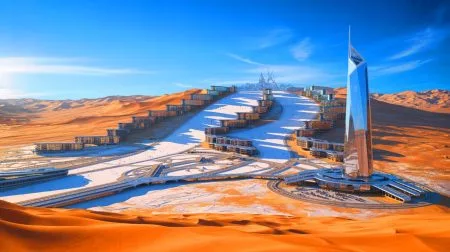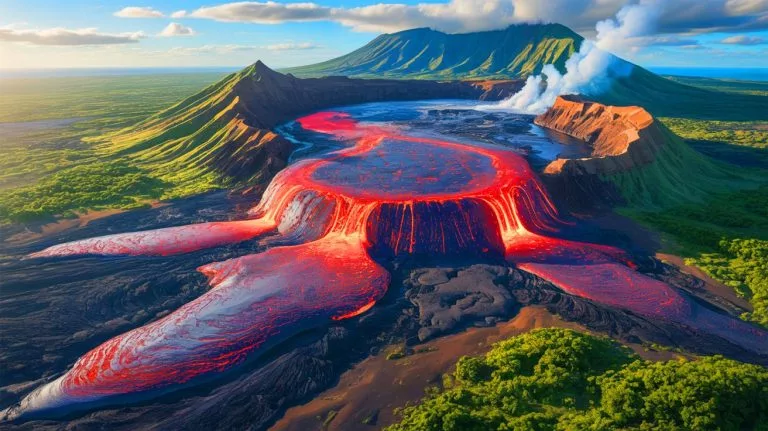| IN A NUTSHELL |
|
The dynamic nature of volcanic activity has long intrigued scientists, particularly in regions like Hawaii where the Earth’s forces are vividly on display. Recent research has turned to a novel technique involving tiny gas bubbles to delve deeper into the mysteries of magma flow beneath these volcanic islands. As Hawaii’s islands drift northwest on a tectonic plate, researchers are uncovering how these movements affect magma flow, shifting it deeper underground and challenging previous assumptions about volcanic eruptions. The findings from this research not only enhance our understanding of volcanic processes but also have significant implications for predicting future eruptions and assessing volcanic risks.
New Insights Into Magma Storage
In a groundbreaking study, scientists have utilized the presence of tiny gas bubbles trapped within magma crystals to gain new insights into magma storage and dynamics. This phenomenon, known as “fluid inclusion,” provides a precise measurement of pressure and depth, giving scientists a clearer picture of magma activity beneath the Earth’s surface. The technique marks a significant advancement in volcanic research, offering precision that was previously unattainable. According to Esteban Gazel, a scientist from Cornell University, this method allows for measuring pressure from depths with uncertainties as small as a few hundred meters, a remarkable achievement considering the vast depths involved.
The implications of these findings are profound. By accurately determining where magma is stored, scientists can enhance physical models that explain eruptive processes. This knowledge is crucial for assessing volcanic risks and improving predictions of future eruptions, ultimately contributing to the safety and preparedness of communities living near active volcanoes.
Understanding Different Volcano Life Stages
The research team applied their innovative method to study samples from three Hawaiian volcanoes: Kilauea, Haleakala, and Diamond Head. Each volcano represents a different stage in its life cycle, providing unique insights into magma storage and volcanic activity. Kilauea, known for its frequent eruptions, showed magma storage at relatively shallow depths of about a mile, aligning with previous predictions. Haleakala, on the other hand, revealed two distinct magma storage areas — one shallow and another deeper within the Earth’s mantle, ranging from 12 to 16 miles deep.
Diamond Head, located on the island of O’ahu, exhibited magma storage entirely within the Earth’s mantle, at depths of 13 to 18 miles. These findings underscore the complexity of volcanic systems and highlight the importance of understanding the precise depths at which magma is stored. As Gazel emphasized, knowing these depths is fundamental for developing accurate physical models and conducting comprehensive volcanic risk assessments.
Implications for Volcanic Risk Assessment
Accurate knowledge of magma storage depths is essential for assessing volcanic risks and improving prediction models. The new findings challenge traditional ideas that eruptions are fueled solely by magma stored in the Earth’s crust. Instead, the research suggests that magma may be stored and mature in the Earth’s mantle, fueling eruptions from these deeper reservoirs. This shift in understanding has significant implications for volcanic risk assessment, as it requires a reevaluation of existing models and strategies for monitoring volcanic activity.
By integrating these insights into volcanic monitoring systems, scientists can enhance their ability to predict eruptions more accurately and provide timely warnings to affected communities. This is particularly crucial for regions like Hawaii, where volcanic activity poses a constant threat to residents and infrastructure. As the research progresses, it will contribute to a more comprehensive understanding of volcanic processes and improve the resilience of communities living near active volcanoes.
Future Directions in Volcanic Research
The advancements in understanding magma storage and volcanic activity open new avenues for future research. Scientists are now better equipped to explore the complex interactions between tectonic movements, magma flow, and volcanic eruptions. The novel technique of analyzing fluid inclusions provides a powerful tool for investigating other volcanic regions around the world, potentially uncovering new patterns and behaviors in volcanic systems.
As researchers continue to refine their methods and expand their studies to include a broader range of volcanic environments, the potential for new discoveries is vast. This research not only enhances our scientific knowledge but also holds practical implications for improving volcanic risk management and ensuring the safety of communities living in proximity to volcanoes. How will these insights shape future volcanic research and our understanding of Earth’s dynamic processes?
Did you like it? 4.5/5 (22)








Wow, this is mind-blowing! Who knew gas bubbles could reveal so much about volcanoes? 🌋
Wow, reading magma’s mind sounds like something out of a sci-fi movie! 😮
Can this research help predict eruptions in other volcanic regions too?
Can someone explain how exactly they measure the pressure from these tiny bubbles? Sounds fascinating!
Thank you for such an insightful article! 🌋
I’m skeptical. How reliable is this fluid inclusion technique really?
Is this method applicable to all volcanoes or just those in Hawaii?
What a fascinating way to look at magma! Kudos to the researchers! 🎉
Thank you for this amazing insight into volcanic activity. It’s crucial for those living near volcanoes. 🙏
How accurate are these gas bubble readings in predicting actual eruptions?
So cool! It’s like being a volcanic detective, uncovering secrets from beneath the Earth.
I gotta say, the idea of “reading magma’s mind” is both awesome and terrifying!
Great article, but it left me wondering how these findings will change current eruption prediction models?
How long did it take to develop this fluid inclusion technique?